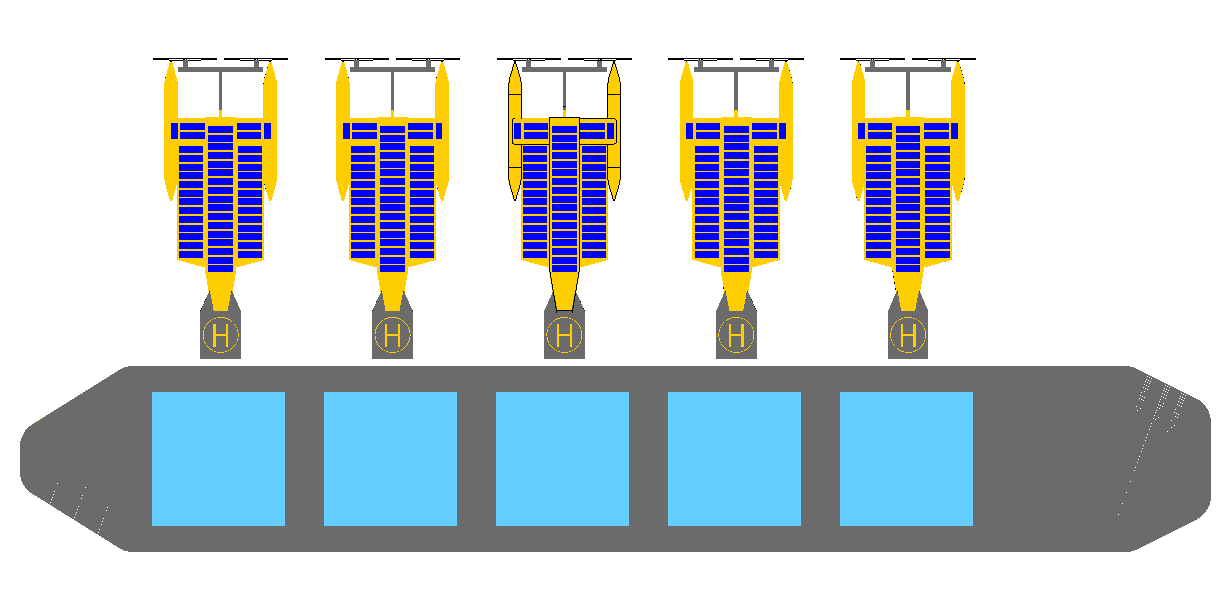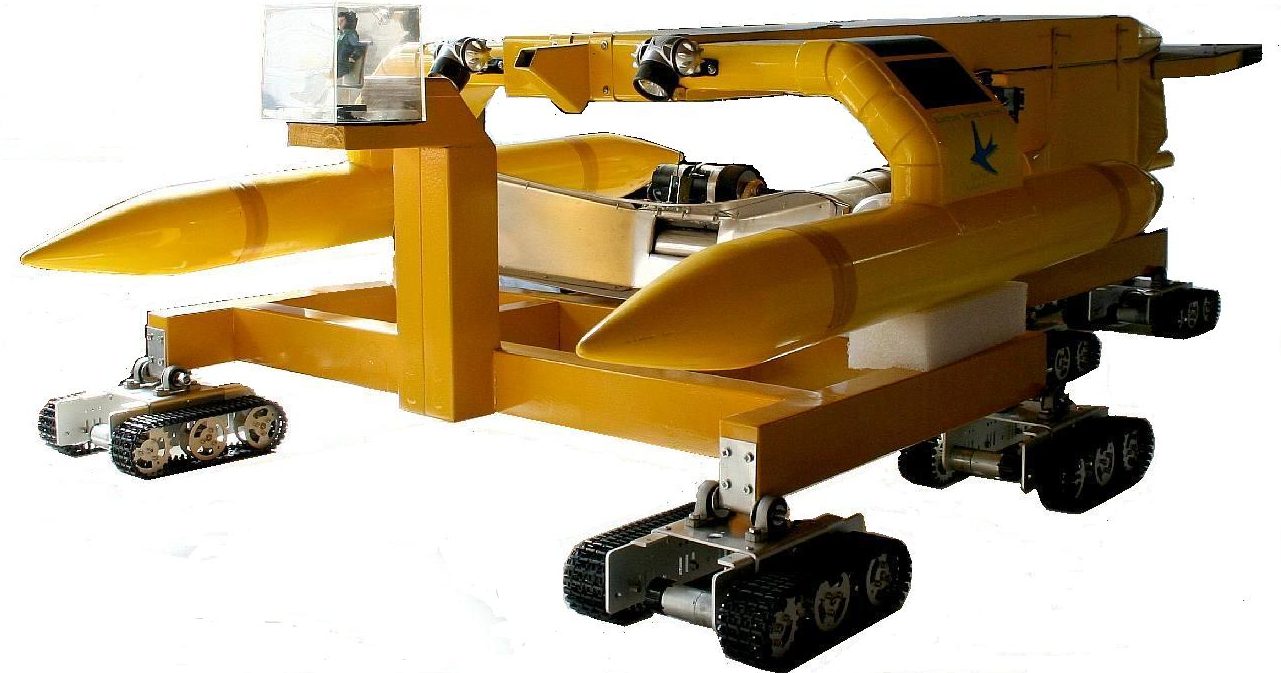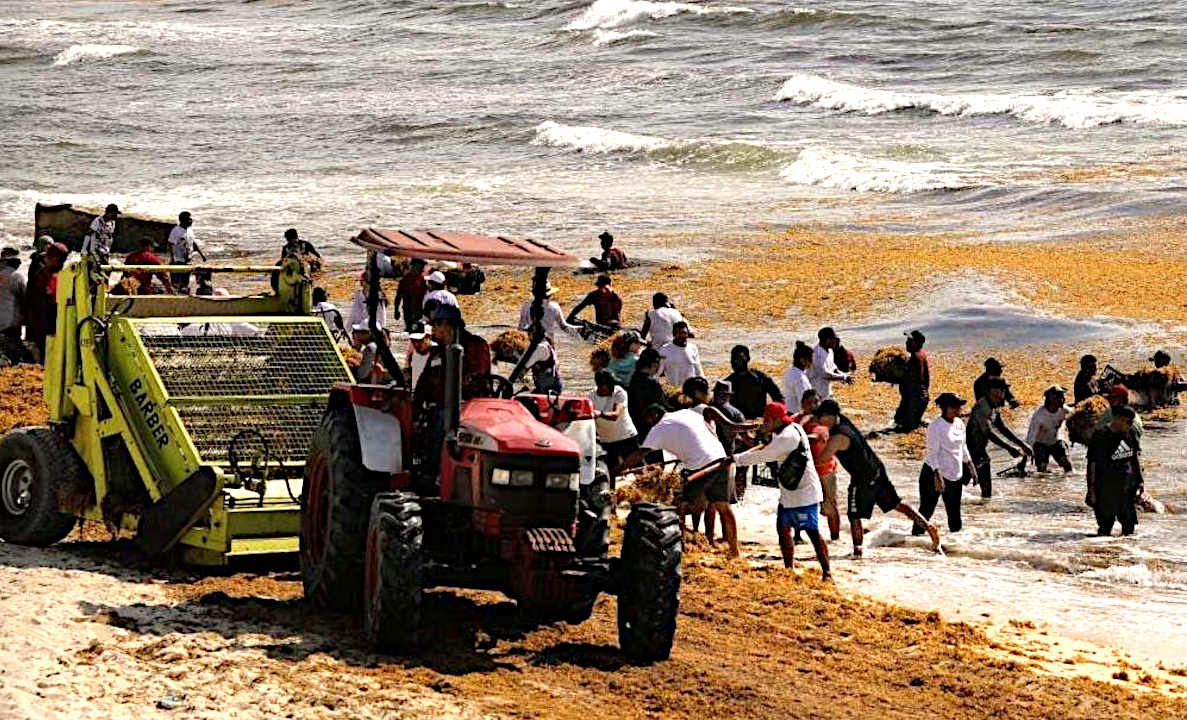|
SEANET ™ SARGASSUM CRISIS CONTINGENCY SOLUTIONS
Please use our A-Z INDEX to navigate this site, or cruise HOME
BIOMASS - BUILDING MATERIALS - CANCER - CLOTHING & SHOES - CO2 SEQUESTRATION - COSMETICS FERTILIZERS - FOODS - MEDICINES - MINERALS - PACKAGING - SUPPLEMENTS - VITAMINS
|
|
|
|
|
|
SARGASSUM SEAWEED SOLUTIONS - The basic SeaVax machine seen here as a proof of concept (working model) was designed to filter macro & micro plastics from seawater - in bulk, and recover ghost fishing nets of up to 150 tons. It was to be solar and wind powered. The Calypso and Sargasso (seaweed) models are roughly double and quadruple the capacity respectively, with a revised specification that includes renewable (green) hydrogen in the energy equation, for more operational grunt and versatility. SeaVax machines deployed at this scale would more than likely need dedicated support, in the form of Amphibious portable docks, like the AmphiMax.
The sargassum plague might be contained using technology in the form of ocean cleaning machines with high enough (volume) capacity, such as the SeaVax-Sargasso. That said, we propose incremental development through SeaVax-Calypso capacity, to be sure that as a project progresses, potential technical and financial hurdles are overcome. But, without effective fleet control, the best and biggest sargassum ocean skimmers, are just machines without a plan.
In order to make SeaVax ocean cleaning machines into an effective ocean sweeping armada, in addition to remotely operated (manual drone) control, it would be an advantage to network fleets of autonomous drones of sargassum scooping machines, so that they may communicate by data sharing, for effective fleet operations, such as to form a virtual net, to scoop up sargassum blooms, as the vast floating chains head to the Caribbean Islands, and other locations unfortunate enough to have their sandy shores choked on a regular basis. We call the drone navigation coordination system: SeaNet.
We would suggest such development, for any autonomous machines employed in this capacity.
NASA and other satellite operators are already tracking sargassum blooms, most especially in the Equatorial Atlantic, as it heads to the Mexican Riviera, in Quintana Roo.
Satellite based command and control can be used to to plan missions that may be subsequently modified by live incoming data, to include feedback data from reading the oceans for chemical, biological and macro-algal makeup to let the operation centres, and forward mission planners know how accurately they are reading the oceans and how much sargassum has been harvested.
SEANET GEODATA SHARE & COORDINATION
SeaNet
is designed to be accessible to other compatible vessels in the race to
clean choking seaweed blooms from the oceans. The system may be adapted to
accommodate other vessel formats such as surface skimmers, and even
collection systems like booms. The idea being to share information between
operators so that when one area has being cleaned adequately, assets may be
re-deployed more effectively in other lesser patrolled regions, where
sargassum is still prevalent.
OCEAN TRANSFER - In this diagram we see a 180 x 28 meter Handysize bulk carrier (drawn to scale), and five SeaVax Sargasso ships docking to unload their sargassum haul. If one Handymax can handle around 50,000 tons of harvested seaweed, it would then take 66 SeaVax transfers (in multiples of five as shown) @ 1,000 tons per couple, to fill up one cargo ship. A Handymax would cruise between SeaVax fleets, emptying them in sequence, or as requested by the SeaVax vessels themselves - to make a virtual conveyor belt to land as part of a SeaNet system.
Assuming 24 million tons of sargassum per year as the target yield. We would suggest a fleet of 10 Handysize bulk carriers, aiming for docking 10 SeaVax Sargasso's 2 or 3 times a day. Each complement of coupled offloads could (@ 2,000 tons each) handle between 4 - 6,000 tons of sargassum per day. Multiplied by 10 ships, equals 40-60,000 tons per operational day - or around 10 million tons in 200 operational days per year. Meaning, that to cope with 24M tons, we'd be looking at operating 25 Handysize bulk carriers operating in the equatorial Atlantic, to cope with the present state of emergency.
That would of course mean clean beaches in the Caribbean Sea. If that could be achieved. Funding being the main obstacle to overcome. This frequency of operations may be reduced, by operating SeaVax Calypso machines in the Caribbean Sea. We'd suggest that the stakeholders may want to collaborate on a study, as the first port of call. To decide on a workable strategy, with quotes, etc. Followed by a proof of concept machine at a small scale, and then a pre-production prototype at 'Calypso' scale, or smaller. Budget dependent.
DOCKING PROCEDURE - The docking couplings and method of transfer are not shown or explained here in any detail for legal reasons. Having said that, we can show you the basic principles. The SeaVax and SargassoMax (a converted bulk carrier) on the left are shown together with the hold of the bulk carrier about one third full with the SargassoMax floating high in the water. As the cargo hold fills up with sargassum the ship displaces more water and sinks deeper into the seawater. A special coupling and transfer technique is needed to make this work. The same system will work just as effectively when SeaVax is transferring its cargo in harbours, ports and rivers, or to factories located conveniently on beaches - using Amphimax machines.
Ideally, the Handysize bulk carrier diesels, should be converted to run on methanol or ammonia. Assuming, purchases of older vessels that have reached the end of their ordinary working life. Another way to make second user ships zero emission, would be to use ancillary electric pod thrusters, and decks loaded with solar panels. Agreed, that this would raise the overall cost of ocean sweeping. But then, the situation may eventually worsen, to a global plague. In which case, (presumably) governments would need to respond rather more urgently than at present. Or we'd not only have coastal tourism (economy) issues, but also a major food security emergency - demanding international relief efforts. Design and Copyright © drawings. Cleaner Ocean Foundation Limited, September 2022. You do not need permission to use these diagrams for personal research or educational projects. All other rights are reserved.
SeaVax machines may stay out at sea for prolonged periods, working with converted HandyMax bulk carriers, as factory ships, to process the harvested sargassum catch. Alternatively, the bulk carriers may return to designated ports for offloading of their cash crops. But that would be an advanced level of development, some years down the line, with profits from previous year's cash crops to plough back and invest in a cleaner future. At the moment we are looking at a loss making situation.
AMPHIBIOUS BEACH RECOVERY - This concept was proven at 1:20 scale between December 2021 and January 2022, when the model seen above successfully transported the 1:20 scale SeaVax proof of concept boat, also performing variable tracked steering maneuvers. The AmphiMax series of beach launch and recovery transporters are designed to be rugged and economical to build, with hydraulically driven caterpillar tracks, resistant to seawater corrosion.
We are using the SeaVax formula as a baseline (example) in the absence of any similar proposals. The hope is that other oceanographers and entrepreneurs might be inspired to similar endeavours. Anyone might take this concept forward, perhaps if there are suitable calls for solutions, of if a business case might be framed, perhaps with support of the affected nations.
SeaVax-Sargasso™ and AmphiMax-Sargasso™ machines are more suitable for ocean duties, such as fleet operation in the Equatorial Atlantic, to head giant seaweed mats off, before they plague the Caribbean coasts, Gulf of Guinea and maybe even spread to the Indian Ocean and Indonesian Seas.
HOW ARE THEY COPING AT THE MOMENT?
Sargassum arrives in droves at predictable times of the year, but from lessons learnt over the last decade, a large labor force and/or specialized machinery and equipment are required for effective large-scale shoreline or in-water collection against booms, that is not making a dent in the volumes rotting on the beaches.
Transferring sargassum from boat harvesters and from onshore mechanized rakes and stockpiles to other means of transport also requires grabs, conveyors or other customized solutions, all of which can be very costly in terms of a carbon footprint.
WHAT DRIVES US - It is pictures like this beach at Cuncun, Gulf of Mexico, stinking to high heaven with sargassum, that is ruining the local economy and ecology, that makes us want to do something about it. You can too. Why not begin a research project for your masters degree. Work with the Cleaner Ocean Foundation, to make a difference to the world your great grandchildren will inherit - if they are lucky.
LINKS & REFERENCE
http://
|
|
|
"Be the solution, not the pollution."
BIOMASS - BUILDING MATERIALS - CANCER - CLOTHING & SHOES - CO2 SEQUESTRATION - COSMETICS FERTILIZERS - FOODS - MEDICINES - MINERALS - PACKAGING - SUPPLEMENTS - VITAMINS
|
|
|
Please use our A-Z INDEX to navigate this site, where page links may lead to other sites, or cruise HOME
This website is provided on a free basis as a public information service. copyright © Cleaner Oceans Foundation Ltd (COFL) (Company No: 4674774) 2022. Solar Studios, BN271RF, United Kingdom. COFL is a not for profit company without share capital. The names AmphiMax® and SeaVax® are registered trademarks.
|



